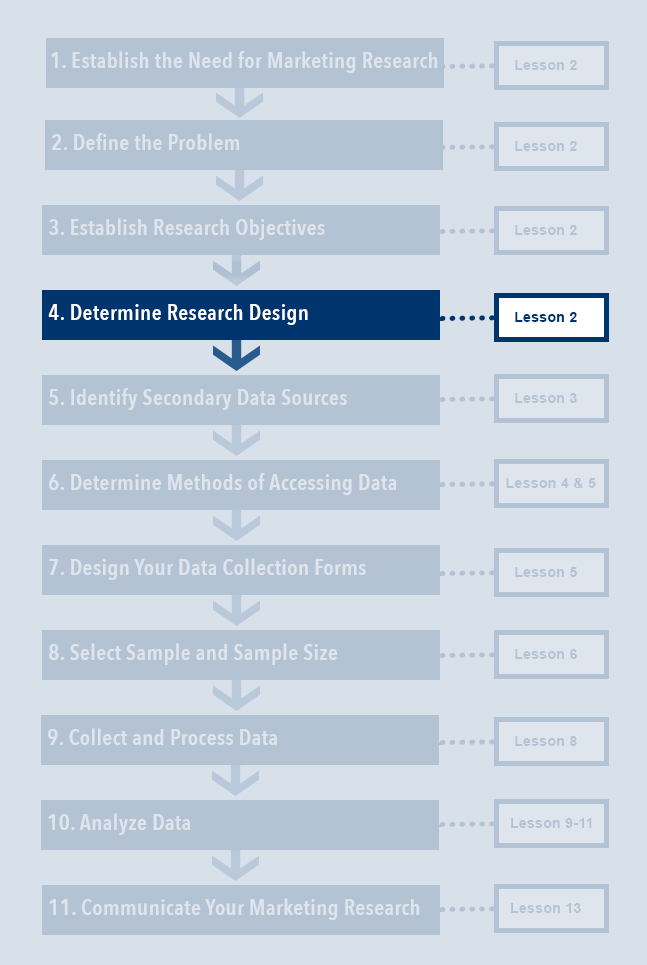Main Content
Lesson 2: The Marketing Research Process and Research Design

Figure 2.2. Determine Research Design in Marketing Research Process.
2.3 The Research Design
Marketing research studies may need one or more of a wide variety of available research methods. In the Lesson 1 Discussion Forum, you learned that there are a large number of possible methods to collect information. Surveys and focus groups are some of the more common and traditional methods. A marketing researcher can also use eye-tracking studies, food tasting studies, video analysis of the different paths of shoppers in a store, and mystery shoppers. Each method has advantages and disadvantages.
After familiarizing yourself with the problem and the research objectives, it is helpful to consider the most appropriate method(s) to use. The outcomes are formalized in the research design, which is a set of advanced decisions making up the master plan specifying the methods and procedures to collect and analyze the collected information. Note that the research design is Step 4 of the course framework (see Figure 2.2).
Table 2.1 shows the three types of research designs. Note that the choice among these research designs depends heavily on the research objectives. For each research design type, the table presents a research objective and a matching example.
| Exploratory Research Design | Descriptive Research Design | Causal Research Design |
|---|---|---|
For example, understand which factors influence the choice for a certain brand. |
For example, does your product satisfy your customers? |
For example, the relationship between price and sales. |
Marketing research can involve one or more of these research designs. Typically, exploratory research precedes descriptive research, which precedes causal research; however, the order can sometimes vary. For example, the outcomes of causal research may induce additional exploratory or descriptive research.
The next few pages will cover these three research designs in more detail.
